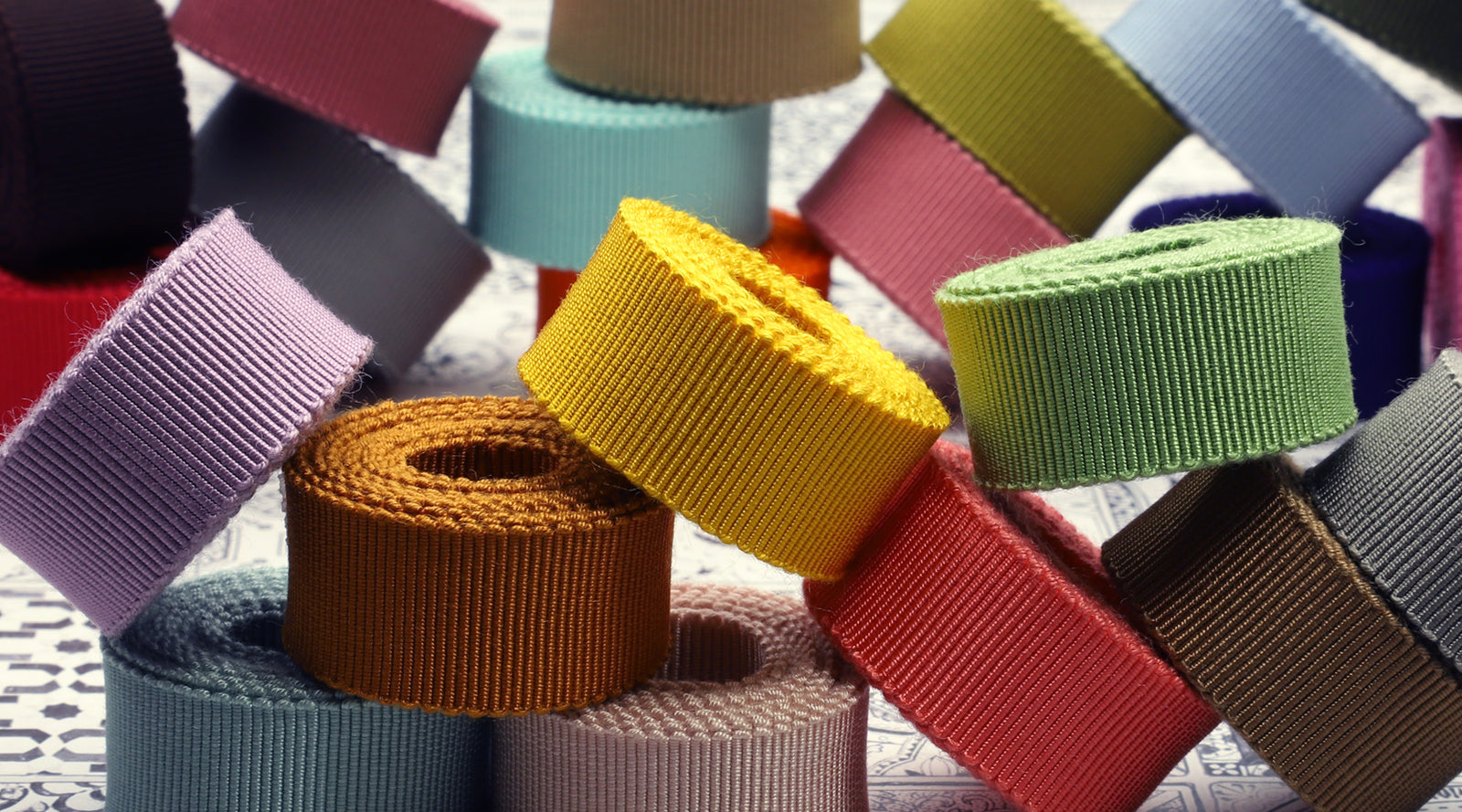Your Cart is Empty
We will be closed from December 27, 2025 to January 5, 2026.
We offer the prompt delivery of high-quality ribbons, cords, and braids with excellent functionality and design by Japanese manufacturers at low prices. Small lot orders are also accepted. As our ribbon products are authentic and have been lauded by professionals in the apparel industry both within and outside Japan, you can use them with a peace of mind.
Ribbons saw its prosperity in the middle ages in European fashion mode and have been greatly cherished since the "Golden Age" in 19 century. S.I.C. seeks to the beauty of the drape and color in "Good Old Days". A wide range of attractive ribbons, such as reversible ribbons and metallic ribbons, along with the basic ribbons ranging form satin, organdy to grosgrain. we hope that these quality products will be suitable for not only haute-couture but ready-to-wear.
Knit tape consists of loops pulled through each other, which gives knitting items a natural stretch and soft feeling. Among a diverse knitting methods, S.I.C. Knit Series are mainly warp-knitting in which the yarn zigzags along the length of the fabric and resistant to runs. We have developed a large number of sheer knit tapes in response to trendy light clothes.
Cords have diversified their designs as well as their function, such as "to tie" or "to knot" in the course of evolution in life culture from ancient times. S.I.C. Cord Series feature antique cord in a deep luster, natural cord made of soft cotton, material for cord-embroidery and embroidered lace, which will add a daring accent to your products.
We use organic cotton grown in the field certified by strict production basis of organic products, which prohibits use of noxious chemicals and fertilizers for more than 2-3 years.
Microsuede is a high sensitive and high functional material made from microfiber. We have developed products made of microsuede with its texture soft and rich that resembles fine real suede.
Leavers trimming lace involves twisting the yarn to produce beautiful patterns. It its said that this type of lace has roots in braids and hunting nets, and elegant designs ware subsequently created for precious ornaments possessed by royalty and nobility in Europe in the 16th century when handicrafts ware highly developed. During the industrial revolution in the 18th century, mechanization of lace-making popularized this type of face. In 1813, the first leavers lace machine was manufactured-this was the original of today's lace machines.
This is a type of knitted lace, which is also known as raschel lace. Warp knitting machines were introduced for making lace products around the late 17th century to the 18th century. Since then, this type of lace has developed along with improvements in knitting machines. In 1804, the first jacquard machine was manufactured, with a mechanism to regulate the warp movement by means of pun chine cards. The mechanism made it possible to produce stretch lace utilizing the characteristics of knitting. Selection of stretch or non-stretch lace produces different design expressions.
Embroidery lace is a type of lace that involves embroidery as its principal element. Chemical lace is a type of embroidery lace developed by a German in the 17th century. The most distinctive point of this lace is its manufacturing process, in which the base textile is dissolved to leave only the embroidery yarn. The name comes from the fact that chemical treatment used to dissolve the textile. Nowadays, because of environmental considerations, water-soluble textile is used. Dissolving the base textile produces transparency, which makes the lace resemble knitted fabric although it is actually embroidery. Another characteristic of this lace is its extremely broad range of representation-e.g. using fine count yarn for a delicate finish or coarse count yarn for a feeling of solidity.
This is a type of embroidery lace with embroidery on tulle fabric. The name comes from its birthplace Tulle, a city in France. It originated as a handmade lace around the 16th century, followed by mechanized tulle production starting in the 17th century. A large volume of tulle lace came to appear on the market in the 19th century. Tulle has a thin texture with polygonal mesh patterns. Embroidery is done by running through the mesh. The harmony between the airy mesh of the tulle and the detailed embroidery brings out expressive designs.
Torchon lace is believed to have first been made in the torchon region of Italy. This lace developed from handicrafts is a combination lace manufactured using clockwise and counterclockwise bobbins, involving a process of turning the bobbins and twisting and crossing the threads. The torchon lace machine, invented in the late 19th century, attracted attention when it was exhibited at the Paris Expo, and was subsequently further developed in the Barmen region in Germany.
